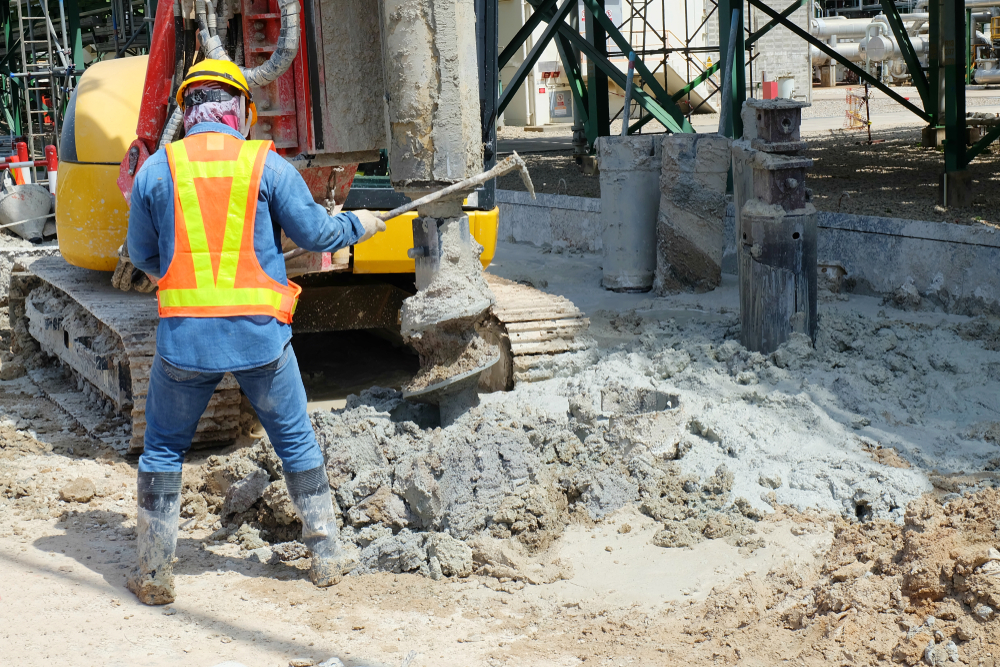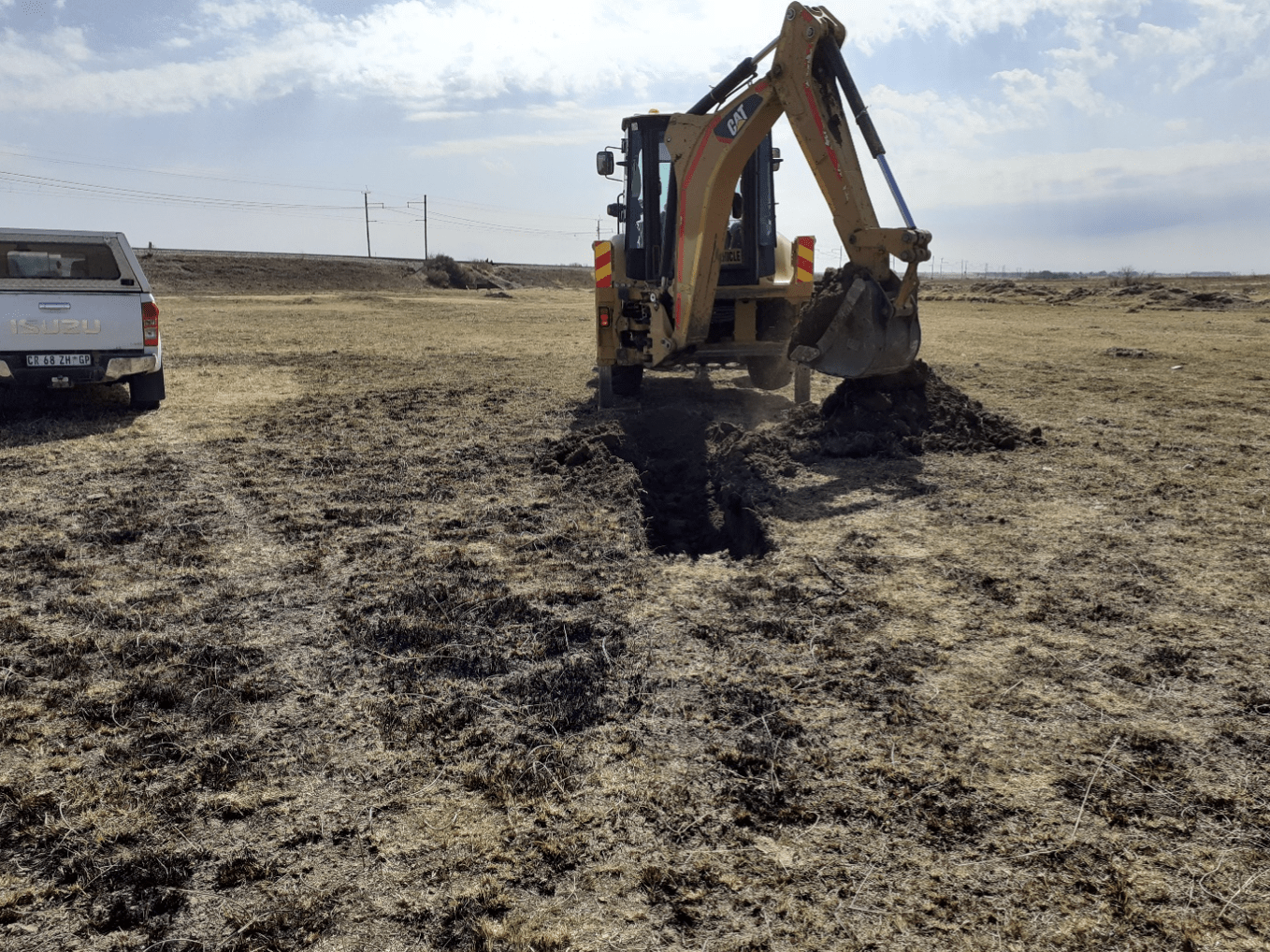Top Reasons to Work With a Geotechnical Specialist for Your Construction Tasks
Top Reasons to Work With a Geotechnical Specialist for Your Construction Tasks
Blog Article
The Relevance of Geotechnical Design in Attending To Ecological Challenges and Enhancing Construction Security
Geotechnical design offers as a foundation in the intersection of ecological stewardship and construction safety, supplying critical insights into the habits of soil and rock under different conditions. By implementing critical site investigations and customized reduction actions, geotechnical engineers play a vital duty in protecting both human lives and environmental integrity.

Role of Geotechnical Engineering
Geotechnical design plays an important function in the design and building of infrastructure by dealing with the habits of soil and rock materials under numerous problems. This field of engineering is crucial for recognizing the interaction in between structures and the ground, that includes establishing the load-bearing ability of soil, analyzing security, and predicting possible negotiation or failure.
Geotechnical designers are in charge of performing site examinations, which include sampling and testing soil and rock to gather data on their chemical and physical residential or commercial properties. This details is crucial for developing structures, preserving walls, and various other earth-retaining frameworks that guarantee safety and long life. In addition, geotechnical design educates the choice of appropriate construction techniques and materials, therefore minimizing risks connected with dirt habits.
Moreover, the combination of geotechnical engineering concepts into urban planning and ecological monitoring is essential for resolving obstacles such as ground contamination and groundwater monitoring. By recognizing geotechnical variables, engineers can develop lasting solutions that boost the strength of infrastructure against natural hazards, while additionally advertising ecological stewardship. Inevitably, the function of geotechnical design is vital for achieving safe, resilient, and ecologically mindful building practices.
Soil Disintegration Reduction
Dirt disintegration postures a considerable threat to both environmental stability and framework stability, influencing roughly 24 billion lots of fertile soil shed every year worldwide. This phenomenon is exacerbated by elements such as logging, urbanization, and inadequate agricultural methods. Geotechnical design plays a critical role in establishing effective dirt disintegration mitigation strategies that protect both the atmosphere and building tasks.
One technique entails the application of disintegration control approaches such as plants growing, which stabilizes dirt with origin systems. In addition, the construction of preserving balconies and walls can efficiently lower surface area overflow and secure at risk locations from disintegration. Proper drainage design is likewise essential; it reduces water buildup and routes excess drainage far from vital frameworks.
Moreover, geotechnical engineers utilize dirt stabilization methods, such as the application of geotextiles and biodegradable mats, to improve soil cohesion and stop deterioration - all about geotechnical engineering. Routine tracking and analysis of erosion-prone websites enable prompt interventions, making certain lasting sustainability. By incorporating these strategies, geotechnical design not only minimizes the influences of soil erosion yet likewise adds to the durability of facilities versus ecological challenges, inevitably promoting a much safer and more sustainable built atmosphere
Groundwater Defense Techniques
Groundwater works as a vital resource for alcohol consumption water, farming, and commercial processes, making its defense important for ecological sustainability and public health. Efficient groundwater protection methods are crucial in reducing contamination dangers and ensuring the durability of this resource.

Normal surveillance of groundwater quality is additionally necessary, making it possible for early discovery of contamination resources and assisting in timely remediation efforts. Using innovative technologies, such as geophysical studies and remote sensing, help in determining possible threats to groundwater books.
Additionally, public education and stakeholder engagement are critical, cultivating community assistance for groundwater security efforts. geotechnical companies in south africa. By combining regulative steps, technological developments, and area involvement, we can create a comprehensive structure that safeguards groundwater resources while advertising lasting advancement and building and construction techniques
Landslide Risk Administration
Landslides position substantial threats to both human safety and security and facilities, making reliable risk management strategies vital. Geotechnical engineering plays an essential role in recognizing, evaluating, and mitigating landslide threats. A detailed understanding of incline security, soil technicians, and hydrology is important for developing efficient risk monitoring strategies.
The very first step in landslide threat management includes detailed site examinations, that include geological mapping and soil testing. These examinations aid designers assess directory the possibility for landslides by recognizing vital elements such as incline angles, soil make-up, and water material. Making use of sophisticated technologies such as remote sensing and geophysical studies can improve the precision of these analyses.
When risks are identified, ideal reduction steps can be applied. These may consist of engineering remedies such as keeping walls, water drainage systems, and slope stablizing techniques. Monitoring systems should be established to identify signs of ground movement and changes in water levels, enabling for proactive treatments.

Enhancing Building Safety
Construction websites frequently provide a myriad of dangers that can jeopardize employee safety and job stability. Geotechnical design plays a crucial role in enhancing construction security by giving essential understandings into subsurface conditions. Via detailed soil and rock evaluation, geotechnical engineers can recognize prospective threats, such as dirt instability, groundwater concerns, and seismic vulnerabilities, which might endanger the safety of construction activities.
Executing why not look here geotechnical services, such as proper foundation design and the usage of keeping structures, mitigates these threats considerably. These solutions not just ensure the security of the structures being constructed however likewise create a more secure working setting for building personnel. In addition, extensive tracking and assessment of website problems throughout the building and construction procedure are vital. Utilizing sophisticated innovations like ground-penetrating radar and inclinometer systems enables real-time information collection, permitting timely treatments when dangers are found.
Additionally, fostering a society of safety and security with training and adherence to developed safety and security protocols better boosts construction website security. By integrating geotechnical knowledge into the preparation and implementation stages, construction jobs can attain greater security standards, inevitably shielding workers and guaranteeing successful job conclusion.
Final Thought
In final thought, geotechnical design serves as an important discipline in taking on environmental difficulties and promoting building and construction safety and security. Via efficient soil erosion reduction, groundwater protection methods, and landslide threat monitoring, geotechnical engineers add to the growth of resistant infrastructure.
Geotechnical engineering serves as a cornerstone in the intersection of environmental stewardship and building security, offering crucial understandings right into the actions of dirt and rock under various conditions. Geotechnical engineering educates the choice of appropriate building and construction approaches and materials, consequently lessening threats associated with dirt habits.
Geotechnical design plays a pivotal function in developing efficient soil disintegration reduction techniques that secure both the atmosphere and construction projects.
In addition, geotechnical engineers utilize dirt stablizing methods, such as the application of geotextiles and biodegradable mats, to improve soil cohesion and protect against destruction. With extensive soil and rock evaluation, geotechnical engineers can identify potential threats, such as dirt instability, groundwater issues, and seismic vulnerabilities, which might compromise the safety and security of construction tasks.
Report this page